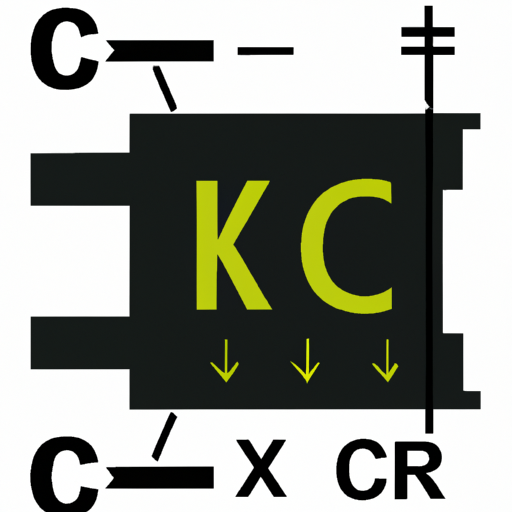Capacitor Symbol Product Training Precautions
I. Introduction
Capacitors are fundamental components in electronic circuits, serving various functions such as energy storage, filtering, and signal coupling. Understanding capacitors and their symbols is crucial for anyone involved in electronics, from engineers to hobbyists. This blog post aims to provide a comprehensive overview of capacitor symbols, the precautions necessary when interpreting them, and best practices for training and usage.
II. Overview of Capacitor Symbols
A. Common Capacitor Symbols
Capacitor symbols are graphical representations used in circuit diagrams to denote the presence of capacitors. The two primary types of capacitors are:
1. **Polarized Capacitors**: These capacitors have a positive and negative terminal, meaning they must be connected in a specific orientation. The symbol typically includes a plus sign (+) to indicate the positive terminal.
2. **Non-Polarized Capacitors**: These capacitors can be connected in either direction, making them more versatile. Their symbols do not indicate polarity.
B. Variations in Symbols Across Standards
Capacitor symbols can vary depending on the standards used in different regions or industries. The two most common standards are:
1. **ANSI/IEEE Standards**: These standards are widely used in North America and provide specific guidelines for electrical symbols, including those for capacitors.
2. **IEC Standards**: The International Electrotechnical Commission (IEC) provides a global standard for electrical symbols, which may differ from ANSI/IEEE symbols.
Understanding these variations is essential for accurate communication and interpretation of circuit diagrams, especially in international projects.
C. Importance of Accurate Symbol Interpretation
Accurate interpretation of capacitor symbols is vital for ensuring the correct functioning of electronic circuits. Misinterpretation can lead to incorrect connections, circuit failures, and even damage to components. Therefore, a solid understanding of these symbols is crucial for anyone working with electronics.
III. Key Precautions When Working with Capacitor Symbols
A. Understanding Polarization
1. **Risks of Incorrect Connections**: Connecting a polarized capacitor in reverse can lead to catastrophic failures, including capacitor rupture or explosion. This risk underscores the importance of recognizing the polarity indicated by the symbol.
2. **Consequences of Misinterpretation**: Misreading a polarized capacitor symbol as non-polarized can result in incorrect circuit assembly, leading to malfunction or damage. Always double-check the symbol before making connections.
B. Voltage Ratings and Their Symbols
1. **Importance of Voltage Ratings**: Every capacitor has a specified voltage rating, which indicates the maximum voltage the capacitor can handle. Exceeding this rating can cause the capacitor to fail, potentially damaging other components in the circuit.
2. **Identifying Voltage Symbols**: Voltage ratings are often indicated alongside the capacitor symbol in circuit diagrams. Familiarize yourself with how these ratings are represented to avoid using capacitors inappropriately.
C. Capacitance Values
1. **Reading Capacitance Symbols**: Capacitance is measured in farads (F), with common subunits being microfarads (µF), nanofarads (nF), and picofarads (pF). The symbol for capacitance is typically represented by the letter "C" in circuit diagrams.
2. **Importance of Correct Values in Circuits**: Using the wrong capacitance value can lead to circuit instability or failure. Always verify the capacitance value indicated in the symbol before installation.
IV. Common Mistakes in Capacitor Symbol Interpretation
A. Misreading Polarized vs. Non-Polarized Symbols
One of the most common mistakes is confusing polarized and non-polarized capacitor symbols. This can lead to incorrect connections and potential damage. Always pay close attention to the symbols and their accompanying markings.
B. Ignoring Voltage Ratings
Another frequent error is overlooking voltage ratings. Failing to consider the voltage rating can result in using a capacitor that cannot handle the circuit's voltage, leading to failure. Always check the voltage rating before installation.
C. Confusing Capacitance Units (µF, nF, pF)
Capacitance values can be expressed in different units, and confusing these can lead to significant errors. For example, a 10 µF capacitor is vastly different from a 10 nF capacitor. Familiarize yourself with the conversion between these units to avoid mistakes.
V. Best Practices for Training and Usage
A. Comprehensive Training Programs
1. **Importance of Hands-On Training**: Practical experience is invaluable when learning about capacitor symbols. Hands-on training allows individuals to work with actual components, reinforcing their understanding of symbols and their implications.
2. **Utilizing Visual Aids**: Visual aids, such as charts and diagrams, can enhance understanding. Incorporating these tools into training programs can help learners quickly grasp the differences between various capacitor symbols.
B. Regular Updates on Standards and Symbols
The field of electronics is constantly evolving, and so are the standards and symbols used. Regularly updating training materials to reflect the latest standards ensures that individuals are equipped with the most current knowledge.
C. Encouraging a Culture of Safety and Accuracy
Promoting a culture of safety and accuracy is essential in any training program. Encourage individuals to double-check their work, ask questions, and prioritize safety when working with capacitors and other electronic components.
VI. Conclusion
In conclusion, understanding capacitor symbols is crucial for anyone working in electronics. Accurate interpretation of these symbols can prevent costly mistakes and ensure the proper functioning of circuits. By following the precautions outlined in this blog post and implementing best practices for training and usage, individuals can enhance their knowledge and skills in working with capacitors.
As technology continues to advance, the importance of continuous learning cannot be overstated. Stay informed about the latest standards, practices, and safety measures to ensure success in your electronic endeavors. Remember, safety and accuracy should always be at the forefront of your work with capacitors.
VII. References
A. Suggested Reading Materials
- "The Art of Electronics" by Paul Horowitz and Winfield Hill
- "Electronics for Dummies" by Cathleen Shamieh
B. Relevant Standards and Guidelines
- ANSI/IEEE Standards for Electrical Symbols
- IEC Standards for Electrical Symbols
C. Online Resources for Further Learning
- Electronics tutorials on websites like All About Circuits and Electronics-Tutorials.ws
- Online courses on platforms like Coursera and Udemy focusing on electronics and circuit design
By adhering to these guidelines and continuously seeking knowledge, you can ensure a successful and safe experience when working with capacitors and their symbols.






